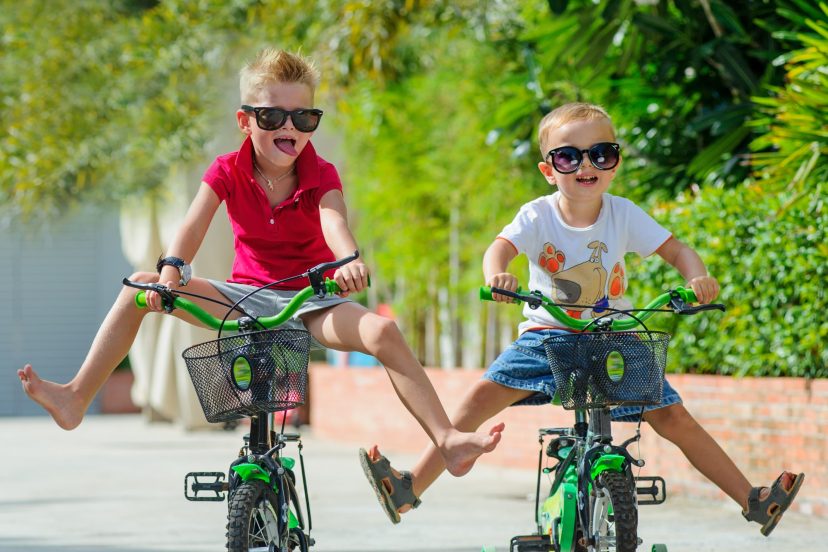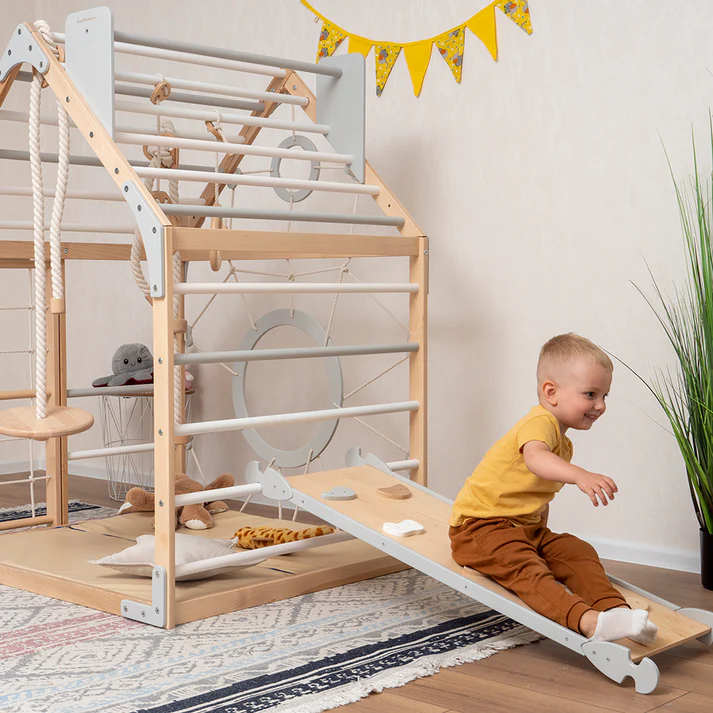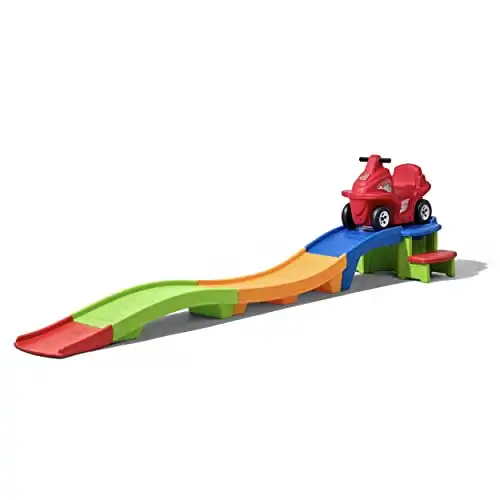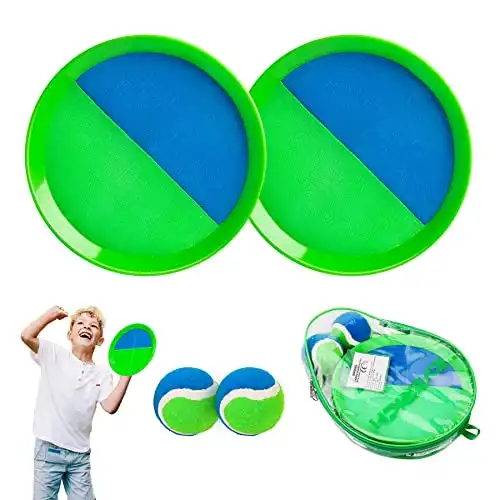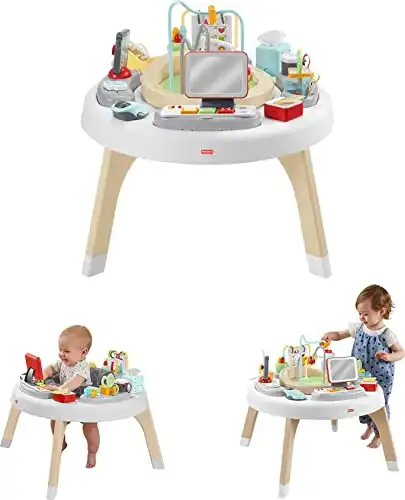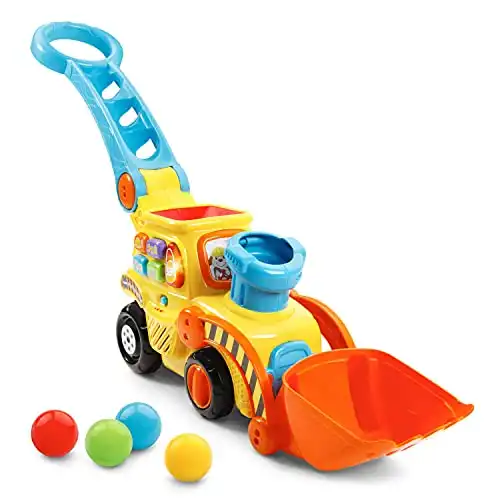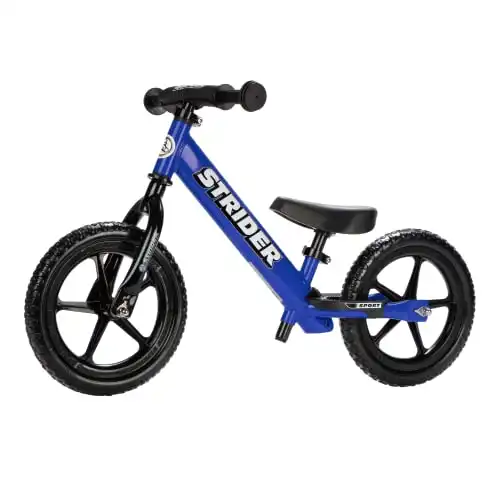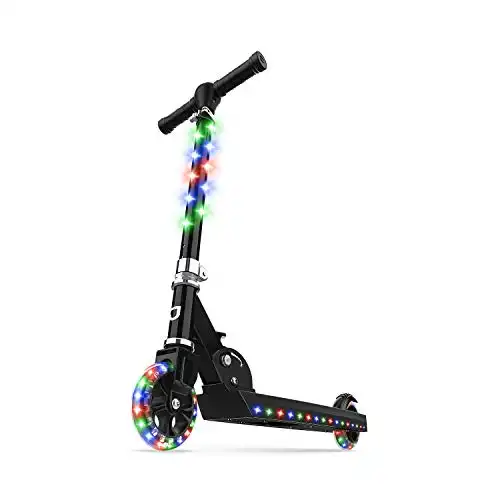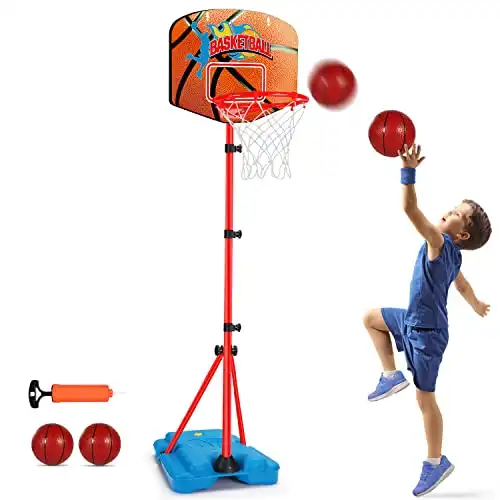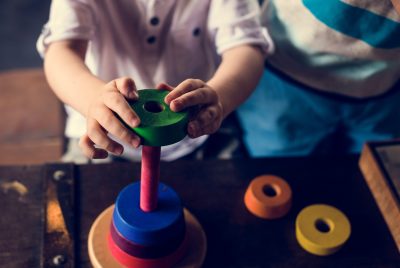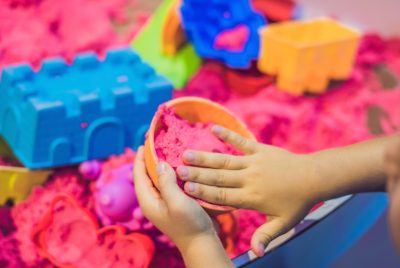Gross Motor Skills Toys: Supercharging Balance and Strength in Children
Have you ever watched kids at play and noticed how some seem so good at climbing, running, and jumping? These skills don’t come out of nowhere; the are developed through practice and the right kind of play equipment. That’s where gross motor skills toys come in. As a parent of 2 energetic boys, I’ve seen firsthand how these toys can dramatically enhance physical abilities in children, fostering not only strength but also coordination and balance.
In This Article
Understanding Gross Motor Skills
Understanding gross motor skills is essential because they involve the use of large muscles in the body and are crucial for a child’s physical development. These skills can be broken down into several key areas that shape how kids move and explore the world around them.
First, there’s balance, the ability to maintain stability whether they’re standing still, walking, or climbing. Then comes coordination, which is all about the smooth and controlled movement of different body parts working together—think of the hand-eye coordination needed to catch a ball. Strength is another major factor, as building muscle power in the arms, legs, and core helps children lift, push, or pull objects as they play.
Equally important is body awareness (proprioception), where kids learn how their bodies move through space—crucial for navigating environments and avoiding obstacles. Lastly, endurance comes into play, as it allows children to sustain physical activity, like running and jumping, over time, helping them build stamina and stay active
All These skills form the foundation for complex movements and are essential for a child’s physical development.
The Benefits of Developing Gross Motor Skills
Developing gross motor skills is fundamental in the growth and overall well-being of children. These skills are not just about the ability to move; they form the bedrock of a child’s physical confidence and are linked to other developmental areas. Here’s why focusing on the development of these skills is so crucial:
Physical Health Benefits
Gross motor skills engage and strengthen the body’s large muscle groups. Regular exercise through play helps prevent obesity, enhances heart health, and builds strong bones and muscles. As children jump, run, and climb, they increase their endurance and improve their overall fitness.
Cognitive Development
There’s a strong connection between physical activity and cognitive growth. Gross motor skills toys often necessitate problem-solving, understanding spatial relationships, and sequencing, which are critical brain functions. For instance, navigating a climbing frame may involve planning moves ahead of time, while catching a ball requires predicting its trajectory.
Social and Emotional Growth
Playing with gross motor skills toys often involves other children, which introduces a social component. Kids learn to take turns, cooperate, negotiate, and compete healthily. Moreover, achieving physical tasks can help boost a child’s self-esteem and confidence. Successfully riding a bike or hitting a ball can provide a profound sense of accomplishment.
Performance At School
There is increasing evidence that children who are physically active perform better academically. This is partly because physical activity can lead to better concentration and attentiveness in the classroom. The discipline and the ability to follow directions gained through structured physical activities can translate into a more structured approach to learning and education.
Foundational for Future Skills
Gross motor skills lay the foundation for more complex skills used later in life. For example, a child who has developed good balance and coordination will likely find it easier to sit still at a desk or participate in more organized sports as they grow older. These abilities are stepping stones that prepare children for a range of challenges.
Emotional Resilience
Physical play and activity can be a healthy outlet for stress and frustration. Children often express emotions physically, and having strong, controlled gross motor skills can help them manage their responses to emotional challenges more effectively.
Types of Gross Motor Skills Toys
Toys that develop gross motor skills come in various shapes and sizes, each designed to target specific skills and developmental stages. Breaking down the categories further, here’s how different types of toys contribute to enhancing these important physical abilities:
Climbing Toys
Climbing toys are perhaps some of the most challenging yet beneficial for developing gross motor skills. They encourage children to use multiple muscle groups simultaneously while also enhancing their problem-solving skills.
- Jungle Gyms: These structures often include a combination of ladders, swings, and slides. Children navigating through jungle gyms learn to balance, coordinate, and plan their movements.
- Climbing Frames: Typically made from wood or metal, these frames can be simple with just a few steps or complex with multiple sections to climb. They help improve grip strength, flexibility, and spatial awareness.
- Climbing Walls: These can be installed indoors or outdoors and are excellent for older children. Climbing walls challenge kids to find the best paths and footholds, boosting their decision-making skills and physical endurance.
Ride-on Toys
Ride-on toys are excellent for teaching balance and coordination while also building leg strength and endurance. They come in various forms, each suitable for different age groups.
- Ride-ons: Ideal for toddlers, these toys are typically pushed with the feet while seated, helping very young children to develop balance and leg strength.
- Tricycles: Trikes are a step up from push ride-ons and are perfect for preschoolers. They require pedaling, which enhances coordination and muscle development in the legs.
- Bicycles: For older children, bicycles require more advanced balance and coordination skills. They also provide a great source of exercise and freedom, encouraging children to explore their environment.
Throwing and Catching Gear
Toys that involve throwing and catching are fantastic for improving hand-eye coordination, timing, and social skills during cooperative play.
- Balls: From simple soft balls to more complex sports like basketballs or soccer balls, throwing and catching balls develop precision, timing, and teamwork.
- Frisbees: These require a different set of skills, including judging flight paths and developing finesse in throwing techniques.
- Bean Bags: Often used in schools for target games, bean bags are softer and easier to catch, making them ideal for younger children just learning these skills
Balance Toys
Balance toys are key for developing the core strength and coordination necessary for many daily activities and sports. They come in all shapes and sizes.
- Balance Beams: These beams sit on the ground and challenge children to walk across without falling off, honing their concentration and balance skills.
- Hopscotch Mats: These mats also promote balance and can be used indoors or outdoors. They encourage children to manage body control as they jump between squares.
- Pogo Sticks: Suitable for older children, pogo sticks require strength, endurance, and balance, providing a fun and challenging way to jump around.
Age-Specific Recommendations for Gross Motor Skills Toys
Selecting the right gross motor skills toys for a child’s age and developmental stage is crucial to ensure they are both safe and challenged. Here’s how to choose the best toys for each age group, promoting optimal development through play.
Infant Gross Motor Skills Toys (0-1 Year)
For the youngest children, the focus is on stimulating initial movements and interactions with their environment.
- Baby Activity Center: These usually feature overhead arches with hanging toys that infants can reach for and kick, which helps in developing their arm and leg muscles.
- Tummy Time Toys: Regular intervals of tummy time help strengthen an infant’s neck, shoulders, arms, and back muscles, which are crucial for crawling and eventually standing
- Soft Blocks: Large, soft blocks can be grasped and stacked, encouraging both fine and gross motor skills as infants learn to manipulate objects.
Gross Motor Skills Toys For Toddlers (1-3 Years)
As children transition from crawling to walking and eventually running, the right toys can play a vital role in this development. Lets look at some of the most popluler for toddlers:
- Push Toys: Toys that toddlers can push along the ground, such as walkers or push cars, help them develop balance and muscle strength as they learn to walk.
- Simple Ride-ons: Low-to-the-ground ride-on toys that are propelled by the child’s feet help develop leg strength and balance.
- Seesaws: Using both strength & Balance, the seesaw is a fun and cooperaitive way to build gross motor skills
Preschooler Gross Motor Skills Toys (3-5 Years)
At this stage, children are more coordinated and can handle more complex tasks and structured play.
- Tricycles: Riding a tricycle helps preschoolers develop pedaling skills, coordination, and navigation.
- Balance Bikes: These bikes without pedals teach children how to maintain balance and steer at the same time.
- Climbing Toys: Toddlers enjoy climbing, and small, safe climbing frames designed for their size can be ideal.
Early School Age Gross Motor Skills Toys (5-7 Years)
Children in this age bracket can manage even more challenging equipment and are developing stronger social play skills.
- Bicycles with Training Wheels: These help children transition to standard bikes while still providing some balance assistance.
- Scooters: Scooters require balance and coordination and are fun for kids to zip around on.
- Climbing Ropes and Ladders: These can be added to play sets for an extra challenge, encouraging both strength and strategic thinking.
Older Children Gross Motor Skills Toys (7-12 Years)
Older children are ready for sports, complex movements, and can handle higher levels of physical challenge.
- Standard Bicycles: At this stage, children should be able to ride bicycles without training wheels.
- Sport-Specific Gear: Equipment for soccer, basketball, baseball, and other sports are appropriate and encourage both individual skill development and teamwork.
- Complex Climbing Structures: Larger jungle gyms and climbing walls suitable for older children can provide extensive physical workouts and fun.
Closing Thoughts From Me
Investing in gross motor skills toys and integrating everyday activities that promote physical development are essential steps toward nurturing well-rounded, healthy children. By choosing the right ones and incorporating routine physical activities, you can significantly enhance your child’s coordination, strength, and overall well-being.
FAQs
What age is appropriate to start using these toys? From as young as one year old, children can begin using simple gross motor skills toys.
Can these toys really make a difference in a child’s development? Absolutely, they play a critical role in physical and cognitive development.
Are there any risks associated with these toys? Like any physical activity, there is always a risk of injury, but proper supervision and appropriate selection of toys can minimize risks.
How often should children play with these toys to see benefits? Regular daily play is ideal for steady progress and skill enhancement.
Can these toys help children with developmental delays? Yes, many specialists recommend gross motor skills toys to help mitigate developmental delays.

